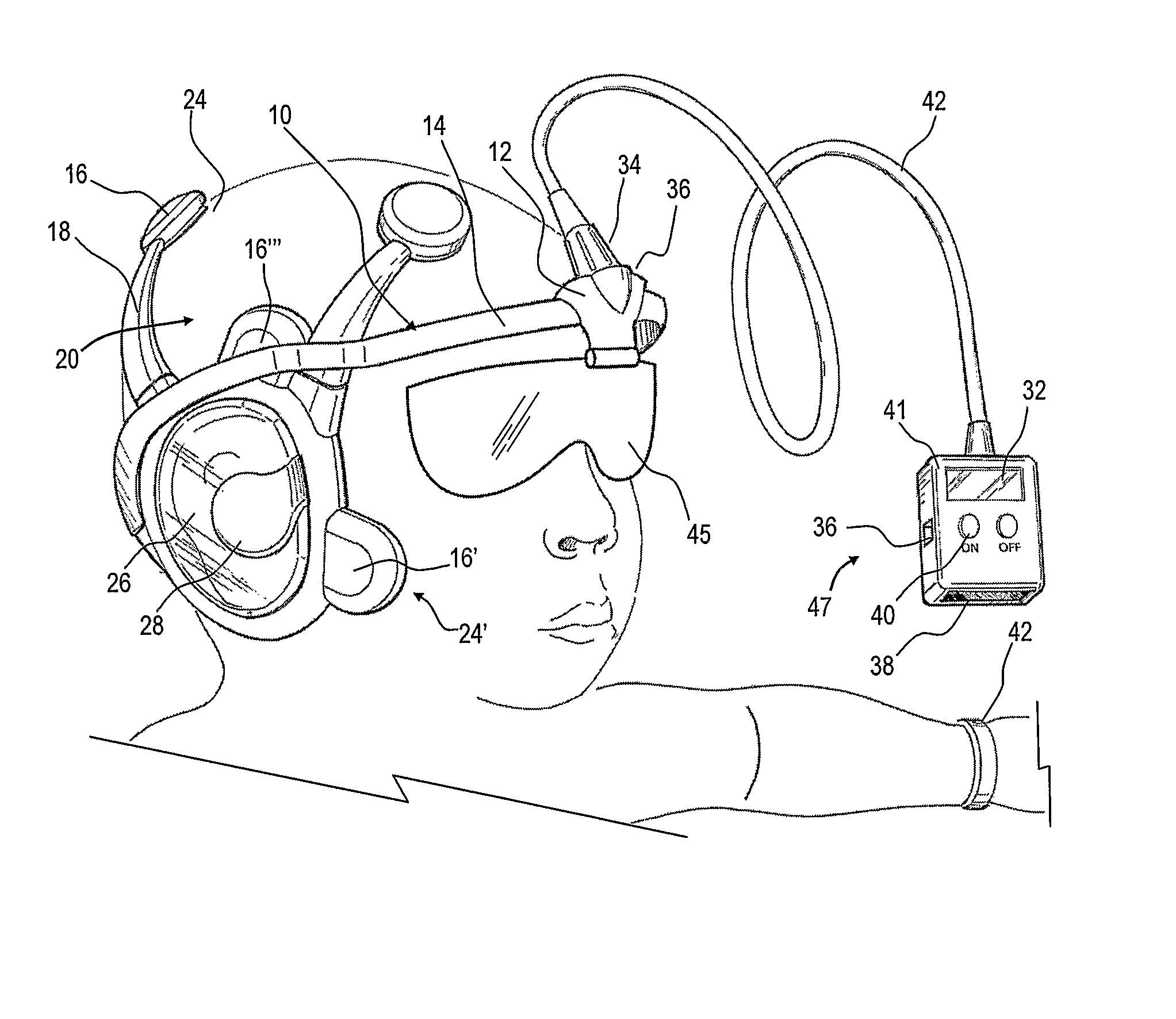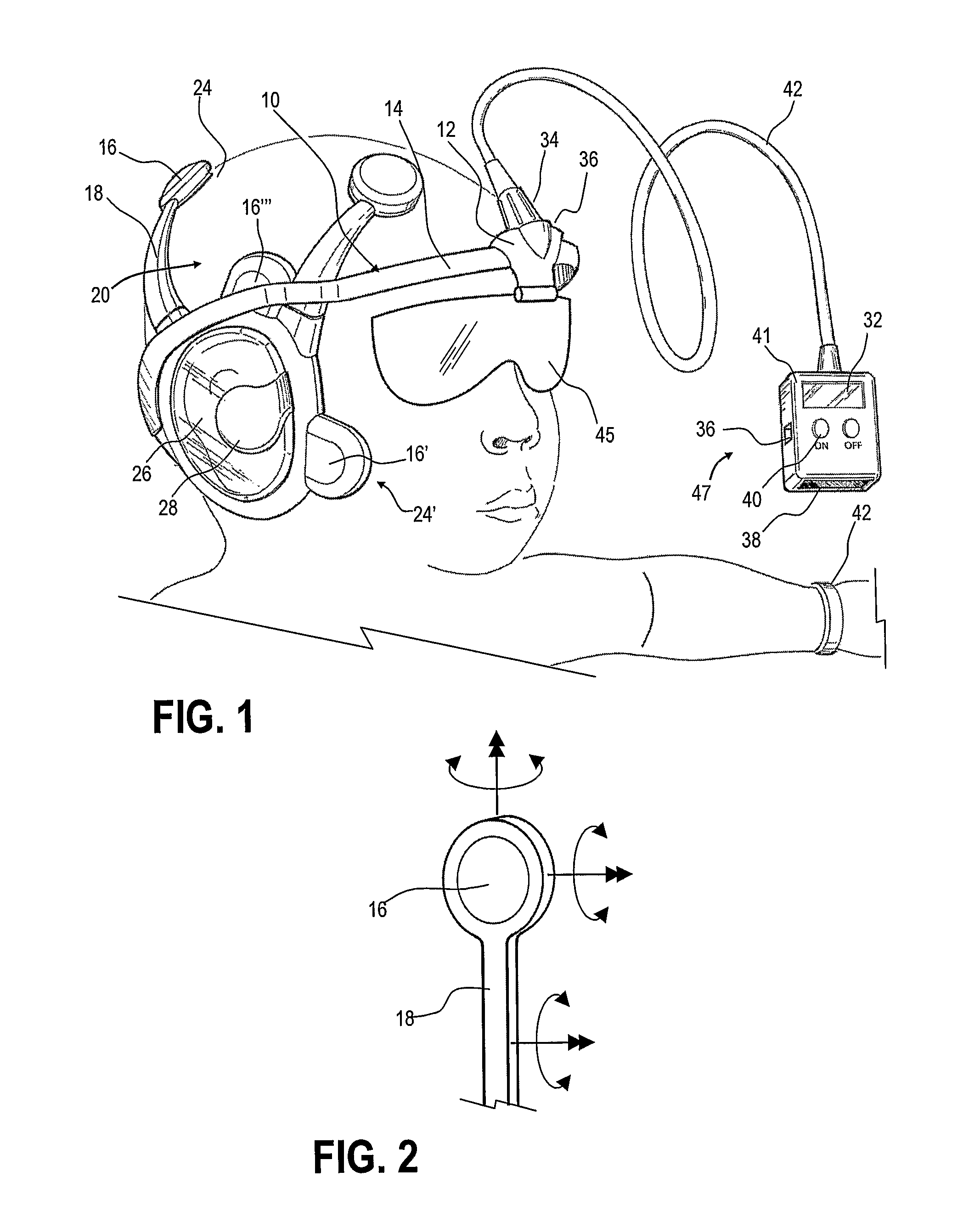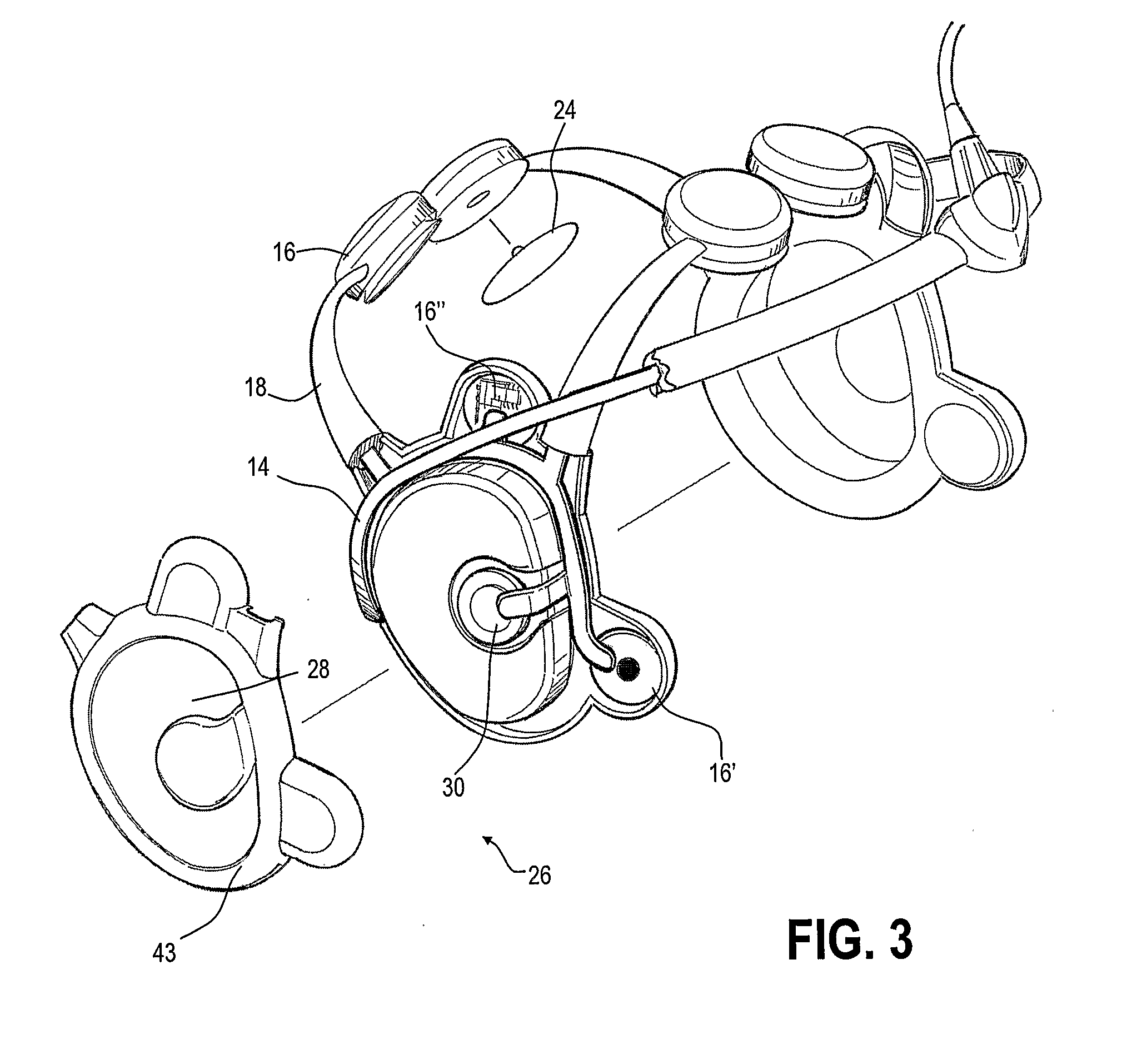ERPs from dyslexic children often show abnormally
high peak voltages and long
signal latencies.
These characteristics may correlate to higher than normal energy requirements to process sounds and slower discrimination and sound-to-
symbol mapping, the outward manifestations of which will primarily be difficulty in reading and writing.
This intermixing of signals makes it difficult to separate cognitive and physiological contributors to the observed EEG.
The smaller size of the ERP relative to other physiological events can also make it difficult to discern the relevant
signal.
However, information recorded at the
scalp cannot capture all of the generated electrical activity.
It may be difficult to detect a
signal if the distance from the cortical or subcortical regions generating the signal to the
scalp is too
great relative to the signal's strength.
Challenges exist for a comprehensive approach to detection and analysis due to generally-known techniques for
source localization that rely on different principles which can produce conflicting results.
Other ERP components such as the Contingent Negative Variation, the Left Anterior Negativity, the Late Positive Potential, and the Positive Slow Wave are not included in the current review due to a sparcity of information regarding their sources and / or the limited space available to cover a large amount of research.
However, it is difficult to differentiate the peak- specific locations because
dipole source analysis is still relatively primitive, making it difficult to disentangle the individual effects of the neighboring structures.
However, this effect was not present for the scrambled pictures.
Given the use of ERP averaging to remove
noise from the data, researchers must maintain a balance between presenting enough deviant trials to obtain low-
noise average responses, and not allowing the subject to habituate to the deviant, thus diminishing the effect.
The MMN for visual stimuli has been difficult to obtain, although there is some evidence that it can be captured with optical techniques.
The possible sources were investigated and reported that selecting only one region (e.g.,
hippocampus or
thalamus) resulted in poor model fit, but combining the different locations produced a better model.
The amount of effortful semantic
processing required is also unclear.
In addition, it is often larger for correctly recognized words than falsely recognized lures and can be affected by depth of
processing, and the amount of retrieved episodic information.
In the early years of electrophysiological research, equipment limitations made it very difficult or impossible to
record and / or analyze more than a single peak or to
record from more than a few
electrode sites.
Further, it clear that peak characteristics can be affected by the procedures used to
record ERPs.
Differences in number of trials or length of intertrial intervals, variations in stimulus intensity or modality can contribute to inconsistent outcomes.
There are potential problems of interpretation, directly linlkng the
scalp distribution of an ERP component with brain structures located below the specific electrodes.
The tremendous clinical potential of the ERP method has been well recognized although because of certain
system and methodological limitations this potential has only rarely been realized.
These problems generally fall into four areas: (1) complicated, difficult to use, and incompatible hardware systems; (2) lack of standardized
testing protocols including: stimuli, stimuli sequencing and timing,
signal processing, testing environment; (3) analytical methods which do not provide statistically powerful or reproducible results, due to
signal processing limitations, non-algorithmic
peak detection methods, and disregard for information in the ERPs other than the peaks, and (4) requirement to perform
large population studies in order to discriminate small neurological variations.
The equipment expense, level of training required to perform these brainwaves studies, and unreliable results renders them impractical for widespread screening and diagnostic use.
 Login to View More
Login to View More  Login to View More
Login to View More 


